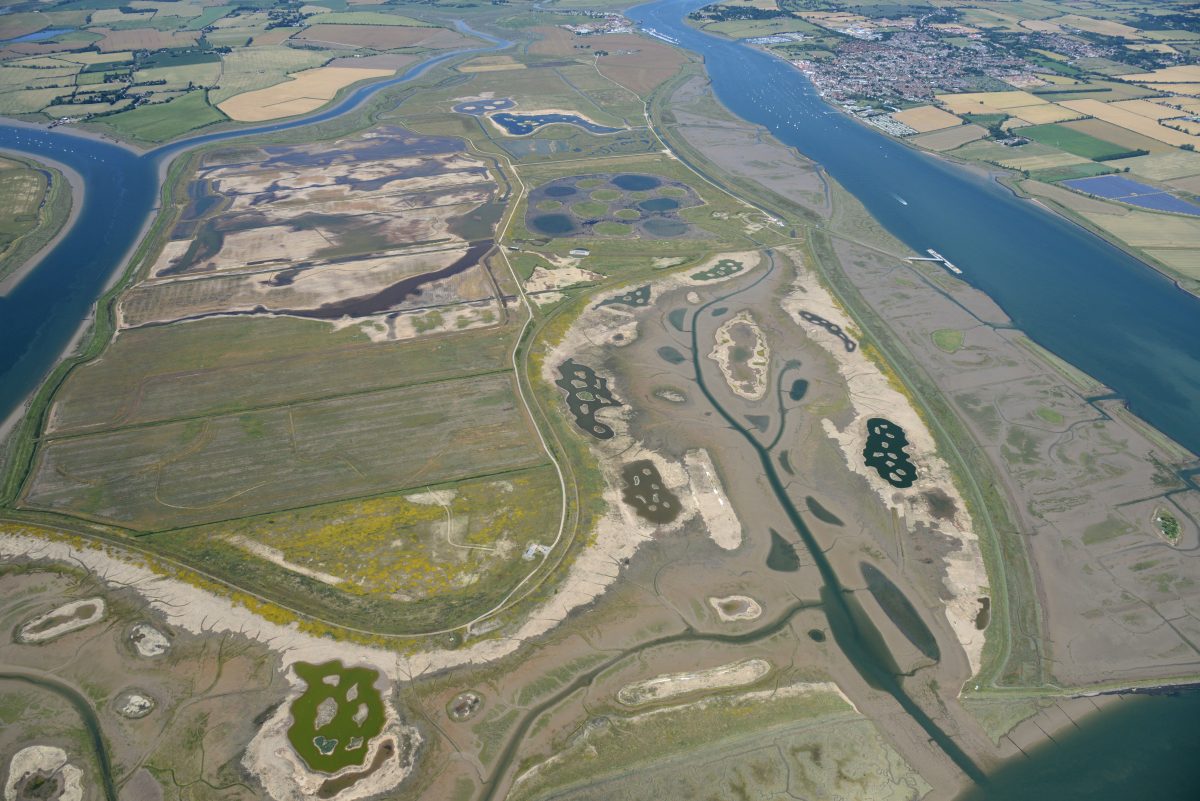
WALLASEA ISLAND WILD COAST PROJECT
The Wallasea Island Wild Coast Project has transformed 670 hectares of arable farmland into lagoons, mudflats, saltmarsh and costal grassland. It now provides habitat for over 30,000 wetland birds in the winter and large nesting colonies of Avocets, Common Terns and Black-headed Gulls in summer. The network of trails with viewpoints now brings in approximately 30,000 visits each year.
Why was the Wallasea Island Wild Coast Project needed?
Four hundred years ago there were 30,000ha of wildlife-rich saltmarsh around the Essex coast. Now, saltmarsh is rare, with just 2,500ha left. That’s a loss equivalent to 39,000 football pitches!
Sadly, this rate of saltmarsh loss will only increase with climate change. Rising sea levels steadily erode the precious mudflats between land and sea and the food-rich environment will be lost to our wildlife forever.
The Wallasea Island Wild Coast Project aims to re-create some of this lost landscape and save it, both for the incredible wildlife that relies on it and for the people that relish it for its restorative benefits and for the pleasure of seeing such places exist.
What habitats have been made?
Jubilee Marsh at the east of the reserve was created with the help of Crossrail material and is open to the tide, creating mud flats and developing saltmarsh, both attracting waders and waterfowl in the winter in their thousands.
Further west there are a mix of saline lagoons, all managed slightly differently to try to provide a variety of different conditions suiting many species. These also attract huge numbers of birds in the winter and the island within them are safe refuges for breeding water birds.
There are two large areas of wet grassland which provide good browsing for geese and Wigeon in winter whilst being good breeding areas for Lapwing and Redshank in summer.
News on the wildlife
Wintering birds enjoy the feeding and roosting found on Jubilee Marsh and the new lagoons across the reserve. There are now internationally important numbers of Shoveler, Grey Plover, Bar-tailed Godwit and Knot and nationally important numbers of Pintail, Black-tailed Godwit, Golden Plover and Dunlin.
The reserve is now one of the largest breeding colonies of Avocets in England and in summer over 2000 pairs of Black-headed Gulls can be heard across the site. Common Terns are increasing in number each year (over 100 pairs in 2023), good to see when they are declining in other areas.
Other birds, like the Spoonbill, are beginning to spend more time on the reserve. Up to eight birds have been seen, and rarely was there a day when they weren’t seen during the winter of 22/23. The lagoons must have held a good source of food all winter for them to stay.
In addition to the waterbirds Corn Buntings, Skylarks and Yellow Wagtails continue to breed in good numbers and are enjoying the mix of grassland, bare ground and weedy species currently found on the reserve.
Each year we undertake cutting along the seawalls and other grass areas to try to maximise the areas of flower-rich grassland. Currently Red Clover and Lesser Birds Foot Trefoil abound, and these provide really good nectar sources for bees such as the Shrill Carder Bee, a rarity but locally common on some Essex seawalls.
Common seals are often seen investigating the breaches and Jubilee Marsh. Water voles continue to do well in the new habitat as well as existing ditches and borrowdykes, whilst the numbers of butterflies and dragonflies have also risen.
What is there for visitors?
Wallasea Island is an amazing space for people too, with wildlife spectacles galore and a chance to relax in the wilds of Essex. The length of trails now exceeds 13km. New Pool trail, the most recent to open, allows visitors to cut east/west across the reserve but will only be open August-February, to protect important breeding areas on the wetlands.
Visitors enjoy the good views of raptors in winter with Short-eared Owl, Marsh Harrier and Hen Harrier all regular sightings. Some years visitors haven’t even had to leave their cars to get really good views of these birds hunting the grassland.
Caroline’s Hide which overlooks the Beagle Lagoons provides a sheltered area for visitors to watch wildlife whilst the two shelters in the far northeast (School House viewpoint) and far southeast (Half Moon viewpoint) provide seating and good views of the Roach. Works in 2022 also improved the habitat in Acresfleet Lagoons, the lagoons closest to the car park, and in the first year, became breeding habitat for Common Terns, Black-headed Gulls and Little Ringed Plover.
We would like to thank the Crouch Harbour Authority for their continued support and positive engagement with the Wallasea Island Wild Coast Project.
Rachel Fancy
RSPB Wallasea Island Site Manager
August 2023

